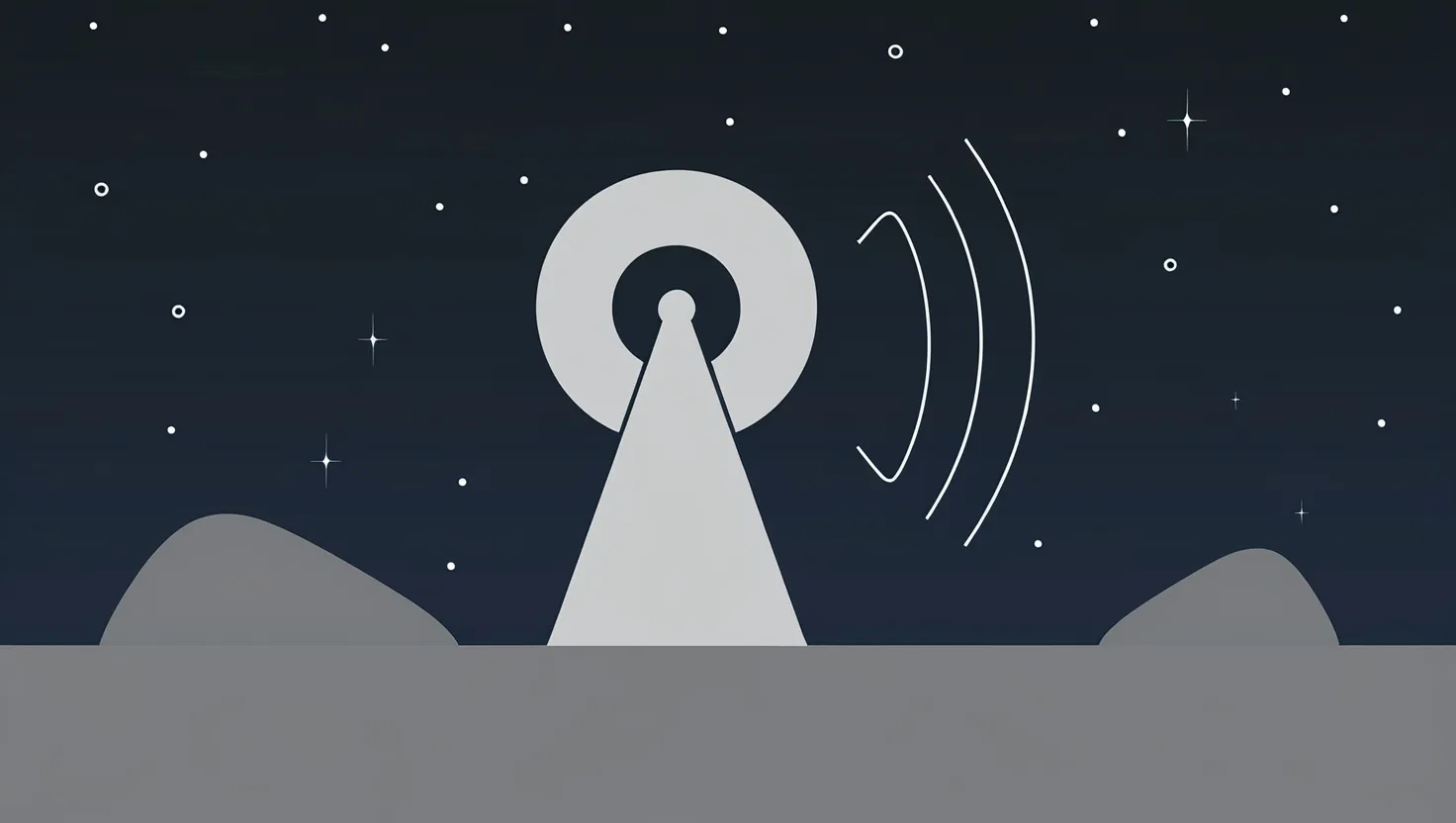When I first encountered the world of cosmic radio anomalies, I felt like I was stepping into a detective novel with no clear villain, no reliable witnesses, and a plot that kept twisting every time I thought I’d grasped a clue. Each of these eight signals from deep space holds a puzzle piece that doesn’t quite fit any picture we’ve drawn so far about how the universe works—or who, or what, might be out there. Let’s explore these extraordinary mysteries together, questioning the edges of what we know and, perhaps, what we’re ready to imagine.
Picture 1977, a humid Ohio night, radio astronomer Jerry Ehman sits at the Big Ear radio telescope sifting through mountains of data. Suddenly, a narrowband signal appears out of the cosmic static, so clear and powerful it stands out from everything else. “Wow!” he scribbles on the printout, and the name sticks. The Wow! Signal lasted just 72 seconds and has never been seen again. It checked the boxes for what we might expect if extraterrestrial technology was whispering in our direction—narrow, focused, and strong—yet every attempt to catch it again has failed. If the universe is trying to tell us something, it delivered its message exactly once and then vanished. Was it a handshake from another intelligence, or just an extraordinary fluke?
That sense of cosmic caprice is echoed by the fast radio bursts—FRBs—that have only been seriously studied since the early 2000s. These are millisecond spikes of radio energy, some so intense they outshine entire galaxies for that brief moment. Here’s what gets under my skin: while most come and go without warning, a handful of FRBs actually repeat. Yet, even their repetition is unpredictable. Some follow periods and cycles, others crackle out in clusters, then lie dormant for months or years. For a while, scientists suspected magnetars—supermagnetic neutron stars—might be to blame, and in at least one case, that fits. But not always. Some have emerged from the outskirts of ancient, dead galaxies where such objects shouldn’t exist. It’s like finding a sprig of new grass growing on the surface of a dry stone.
And what if some of these signals aren’t just rare, but unique? When astronomers at the Parkes Observatory discovered the original Lorimer Burst, they assumed the powerful flash was an error or terrestrial interference. But the data held up. Its dispersion hinted at an origin far outside our galaxy—possibly billions of light-years away. Imagine energy released in a split second, already having traveled across time and void before touching our detectors. The odds of catching this once seem astronomical; the odds of classifying its source, even slimmer.
A haunting question floats to the surface: what mechanisms could produce such power, so briefly, without leaving other obvious traces? Hypotheses abound. Some look to catastrophic cosmic events—collapsing neutron stars, colliding black holes, even speculative phenomena like cosmic strings (theoretical defects in the fabric of space-time). Others wonder about more subtle signals of dark matter, or even the engineered transmissions of non-human intelligence. None explain everything.
Famous physicist Richard Feynman once said,
“I would rather have questions that can’t be answered than answers that can’t be questioned.”
The cosmos seems to delight in keeping us guessing.
The BLC1 signal, detected in 2020 from the direction of Proxima Centauri, seemed almost too good to be true. Its frequency lined up suspiciously well with the orbit of Proxima b, a planet in the star’s habitable zone. Was this finally evidence of technology beyond Earth? Yet, the signal’s properties didn’t fit cleanly with what we know about natural stellar noise, nor could it be easily pegged to satellites or earthly radio leaks. After years of follow-up, no one could pin down a mundane explanation. Yet nothing has repeated. Was this a cosmic prank, a brief technological flicker, or just a strange echo of our own systems bouncing around the galaxy?
In 2017, another oddity arrived from the red dwarf star Ross 128. For ten minutes, astronomers picked up faint, dispersed radio signals, structured enough to stand apart from natural flares but not so artificial as to scream “intelligence.” The star is quiet by nature, making the signal’s origin all the more perplexing. Follow-up observations revealed nothing. It’s like pulling a book off a library shelf, glancing at a page, and finding the rest of the volume blank.
The universe doesn’t mind being cryptic. Philosopher Arthur C. Clarke wrote,
“Two possibilities exist: either we are alone in the Universe or we are not. Both are equally terrifying.”
Are these signals distant greetings, or reminders of the universe’s indifference?
HD 164595, a star resembling our sun, chimed in with a strong, focused pulse in 2015. The signal was brief and never repeated, lacking an obvious source like a known exoplanet or active flare. Notably, it hailed from a system old enough to have developed complex life, at least by our standards. Yet, all attempts to recreate the detection failed. In the hunt for patterns, one wonders: Do these rare events represent a natural process we’ve yet to identify, or are they tests, broadcast once to see who’s listening?
The CHIME telescope in Canada has added to the confusion with the discovery of ultra-long FRBs—bursts lasting seconds, not milliseconds as previously expected. These stretch current theoretical models to breaking. What could possibly release such sustained energy at such distances, yet leave almost no other evidence behind?
Then, there’s the Galactic Center mystery—ASKAP, an Australian array, spotted unidentified, circular radio objects near Sagittarius A*, the supermassive black hole at our galaxy’s heart. These objects flicker into view at radio frequencies but are invisible at other wavelengths. Are they novel types of nebulae, remnants of some unknown stellar death, or something even stranger?
If you’re wondering why all these signals resist clear classification, consider that most of our astrophysical models rely on repeatable, observable phenomena—stars, pulsars, quasars. Anomalies like these don’t play by those rules. They are sparse, unpredictable, and often impossible to revisit or probe further.
Let me turn the question back to you: how should we respond to data that won’t fit our categories? Do we invent new physics, or look harder for the flaws in our equipment and assumptions? Are these signals cries for attention from distant intelligence, or the cosmic equivalent of background noise?
One thing is certain. Every time we point our radio telescopes skyward, the universe sends us puzzles that challenge our theories and stretch our imaginations. These eight cosmic radio anomalies are more than scientific curiosities—they are invitations to humility. They push us to admit how much we still don’t know about the fabric of reality or our potential neighbors in the endless dark.
“Somewhere, something incredible is waiting to be known,” said Carl Sagan. The question is: Will we recognize it when we hear it?
If you spend a night under the stars, away from city lights, you’ll notice the sky is far from silent. It crackles and whispers in radio, X-ray, infrared. Some of those sounds are familiar—solar flares, pulsars, the cosmic background hum—but some, like these, refuse to be explained. They are singular notes in a vast, echoing hall. Are they random, or part of a message? If so, for whom?
Every unexplained signal nudges us to keep asking, keep listening, keep challenging what seems self-evident. Perhaps, in the near future, new technology or a lucky coincidence will catch one of these anomalies in the act—and give us not just hints, but answers. Until then, our cosmic radio mysteries are what keep our curiosity sharp and our sense of wonder alive.






